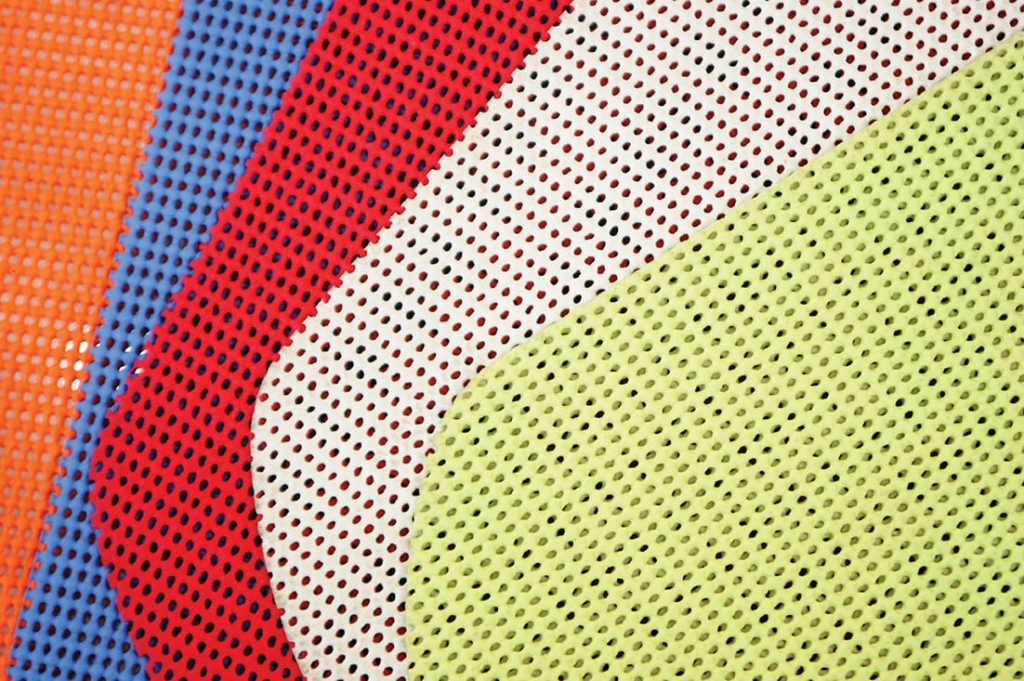by Cynthia Challener, CoatingsTech Contributor
Soft-touch coatings provide a unique feel, or haptic effect, to surfaces with natural characteristics that tend to be unappealing to most consumers, particularly plastics. They are widely used in interior automotive and consumer electronic applications, where manufacturers seek to provide a premium look and feel to differentiate their products from the competition. Formulating soft-touch coatings that meet expectations for both haptic and mechanical performance properties remains a challenge, however. Softer coatings tend to have reduced chemical and abrasion resistance. Finding the right combination of resins that impart a desired rubbery or velvety feel while exhibiting long-term scratch and stain resistance typically involves trial and error and can be a lengthy process. Resin manufacturers have, therefore, focused on developing predictive tools and designing new resin systems that facilitate the formulation of high-performance, soft-touch coatings.
Finding the right combination of resins that impart a desired rubbery or velvety feel
while exhibiting long-term scratch and stain resistance
typically involves trial and error and can be a lengthy process.
Expanding Applications
The increasing desire to offer a soft-touch feeling is a global trend that is occurring in a large number of applications, including consumer electronics (e.g., notebooks, mobile phone casings), appliances (e.g., ovens, coffee machines), automotive interiors (e.g., panels, holders, arm rests), packaging (e.g., cosmetic bottles/caps, bags), and textured films for in-mold decoration/in-mold labeling (IMD/IML), according to Yan Lee, global marketing manager CE/IP with Allnex. “It is a fashionable trend influenced by end-users, who are looking to differentiate their product offering,” she says. Specifically, soft-touch coatings give products a warmer and more comfortable feel, and the elasticity and drag from soft-touch coatings can also prevent slippage of parts.
“The goal in these applications is to create a luxurious feel on ordinary substrates like paper, plastic, and metal,” adds Lisa Spagnola, scientist with Sartomer. Particularly in automotive interior applications, soft-touch coatings provide a luxurious look, soft touch, and leather-like texture to plastic surfaces to simulate the feeling of natural leather and improve the aesthetics and haptic characteristics of car interiors, according to Aditi Chavannavar, technical specialist, Transportation & Industrial Coatings with BASF Dispersions & Resins, North America. In cosmetics packaging, meanwhile, a tactile effect is incorporated to engage the sensory perceptions of consumers, whereas in the furniture industry, soft-touch coatings provide a pleasant-to-touch, matte finish that is mar-resistant. In the printing and graphic arts industries, they are typically used to create a velvet-like feel and also serve as a fingerprint-resistant barrier.
“Plastic parts are not very attractive to look at and do not deliver agreeable tactile sensations,” asserts Chavannavar. “Research into consumer preferences has shown that buyers are more likely to purchase a product if it engages their sensation of touch. It is therefore necessary to coat these parts to achieve color consistency and improve the appearance and feel in order to expand the marketability of vehicles and consumer products.” Paul Honen, global industry manager for Graphic Arts with DSM adds that the combination of look and feel afforded by soft-touch coatings provides added value because they impart distinctive and appealing visual and tactile properties that set products apart in the eyes of consumers. “In addition to a pleasant feel, soft-touch coatings also offer desirable aesthetic features, such as creating contrasting surfaces, reducing sheen, and enhancing color depth,” he notes.
Changing Resin Chemistries
Traditionally, soft-touch coatings have been two-component, solventborne polyurethane systems. As for other coating technologies, the push to reduce the volatile organic compound (VOC) content of haptic coatings has driven a shift away from solvent-based formulations to waterborne or ultraviolet (UV)-cured systems. Today, the most common resins are polyurethane dispersions (PUDs) and polyacrylate (PAC) emulsions crosslinked with either polyisocyanates or carbodiiamides, according to Bill Freeston, technical director for the Global Finishes Group in the Product Finishes Division of The Sherwin-Williams Company.
“Different PUD and PAC chemistries with different hard and soft segments and molecular weights exhibit different attributes from very soft to very hard feel with varying levels of mar and scratch resistance, block resistance, flexibility, weatherability, and chemical resistance,” Freeston observes. Polyurethanes are dominant in the haptic market because they provide a wide formulation base with excellent properties like chemical resistance, scratch resistance, durability, weathering, and ease of application, according to Kurt Best, senior principal scientist in the Coatings, Adhesives & Specialties business of Covestro LLC. He also notes that silicones are used in areas that require a high degree of thermal stability, while UV resins are used in areas where fast curing is required.
While PU technology is currently dominant, Spagnola sees growing interest for UV-cured systems due to disadvantages associated with PU coatings, including pot-life limitations, long cure times, the hazards associated with handling isocyanates, and the inability to meet the durability requirements of certain applications. “UV technology cures in seconds versus the minutes to hours needed for two-part urethanes. There are no free isocyanates, which means an unlimited potlife, and UV-curable chemistry has improved durability,” she states.
Research into consumer preferences has shown
that buyers are more likely to purchase a product
if it engages their sensation of touch.
The properties of soft-touch coatings are often enhanced through the use of a wide range of additives. According to Freeston, polytetrafluoroethylene (PTFE) waxes impart mar resistance and feel, polydimethylsiloxanes (PDMS) provide a slippery feel, wetting agents improve film wetting, and HEUR rheology modifiers influence the flow properties of waterborne systems. Matting agents are also often used to reduce the gloss of soft-touch coatings. “Additives are, in general, used to enhance flexibility, elongation, and soft feel,” comments Mark Houle, a technical specialist in BASF Corporation’s Global Business Unit–Pigments.
Ultimately, the choice of resin and additive chemistries depends on the end-use application and the desired combination of feel and performance properties, according to Houle. Different industries also use different formulations for soft-touch coatings based on the required balance of cost and performance. “The more durable and chemically resistant a coating is, usually the more it costs to produce,” he says. In addition, some industries that need softer coatings may not be concerned about chemical resistance, while others may place higher importance on mechanical properties than feel.
The Challenge of Defining Feel
Touch sense is caused by slight mechanical stimulation of receptors on the surface of human skin. These receptors vary from person to person; therefore, each individual has a different interpretation of haptic properties. In addition, the haptic scale is rather broad (ranging from smooth/velvety to silky to rubbery and tacky), according to Lee. “Feel is extremely subjective. A coating that feels like velvet to one person might feel more like silk to another. Having trained observers is important, but you can still have variations,” comments Spagnola. Visual appearance and previous experience with a particular substrate play a crucial role in determining a person’s opinion on the feel of an object, according to Chavannavar. She also notes that defining “soft feel” can be difficult because some customers want a slippery, silky feel, while others prefer a grabby, rubbery feel.
Getting the Right Balance
In addition to the subjectivity of sensory feel properties, coating formulators are challenged to get the right balance between these soft touch attributes and performance, including chemical and stain resistance. “These properties are contradictory, but customers want both in one coating,” says Hans Koome, segment manager for Consumer Electronics with AkzoNobel. Softer/velvety feels typically have lower resistance properties than harder, silkier feels.
For automotive coatings, chemical resistance to the insect repellant DEET (N,N-diethyl-meta-toluamide) and suntan lotions is essential, as is resistance to cleaners, perspiration, and grease staining. Adhesion can be a challenge as well. “A coating that sticks to one substrate may not stick well to another, or it may be affected by hand creams and suntan lotions, which at elevated temperatures could soften the coating and migrate into the plastic, causing a failure in the adhesion between the coating and the plastic substrate,” Chavannavar explains. “To achieve the required chemical and mechanical properties, the coating would require a higher Tg and increased crosslinking density, which would harden the film and make it resistant to attack by solvents and other chemicals. Since these requirements are the opposite of those necessary to produce a soft feel, the coatings would either exhibit good resistance properties without being soft or they would be soft, but fail in the chemical resistance tests,” she continues.
Ensuring that these coatings are available in the correct colors and effects to meet the latest design trends adds further complexity, according to Koome. “It can be a challenge to develop a full gloss range and clean, bright colors,” agrees Freeston. “Typically soft feels are limited to formulations in the lower gloss range, with formulations in the higher gloss range often feeling too rubbery or sticky.” Low gloss is typically achieved by increasing the levels of matting agents, such as fumed silica, which can make formulation and compatibility with other reagents a challenge. They also reduce film softness and can make soft-touch coatings prone to scratch and mar issues, according to Houle. “Of course,” he adds, “there are other typical user expectations that must also be met: low VOC emissions, ambient temperature cure, ease of application, and low cost.”
AkzoNobel has been focused on achieving faster application for the customer, according to Koome. “This driver is key for customers in the consumer electronics industry, where high production rates are required,” he notes. The other key development goal is to further improve the stain resistance of soft-touch coatings. DSM, meanwhile, has developed a new waterborne UV-curable range of resins that combines the same soft-touch properties as its traditional waterborne polyurethanes, but with enhanced chemical and mechanical resistance properties, according to DSM polyurethane dispersions scientist, Roel Swaans. Like DSM’s original one-component waterborne technology, these systems form a matte, soft-feel coating upon evaporation of the water, resulting in low gloss without the need for matting agents and/or additional crosslinking mechanisms. “Such polymers can be cast in very thin films with high optical transparency,” Swaans says.
The Need for Quantitative Solutions
The surface topography of the coatings and the physical properties of the coating polymers are very important in determining how soft-touch coatings are experienced when they are touched, according to Honen. “One of the key challenges in new product development in the tactile effect field is to quantify the human haptic perception. The quantification of this haptic perception is key to consistently balancing haptic performance with the other performance attributes required to meet the ever-increasing market demands,” says Honen. A measurable quantity that could predict soft-feeling coating properties would be ideal, agrees Spagnola, but she notes that a single measurement like Tg or coefficient of friction will not work because feel is too complicated.
The key coating properties determining the soft touch are Young’s modulus, yield strength, yield elongation, and tensile strength, according to Lee. “While there have been advances in this area, such as measuring the coefficient of friction, Persoz hardness, etc., there is some ambiguity between the information generated by scientific measurements and the data based on the feelings of test subjects,” adds Chavannavar.
DSM has opted to train a human sensory panel to quantify the haptic effects of coatings and other surfaces. This panel is a descriptive human analytical tool, and its services are available to the company’s customers and other value chain partners, according to Swaans. DSM also built a device that measures the actual friction forces between a coating and the human finger as it moves over the coating surface. “Correlating the results of the human panel to steerable physical parameters of soft-touch coatings is helping DSM to continually develop new breakthrough innovations that address the key challenges of our customers and markets,” Swaans asserts.
Covestro has been working to achieve a balance between performance and feel by using a series of measurements that the company refers to as HapticMapping™—an approach that allows the haptic space to be navigated and better defined, according to Best. “HapticMapping allows for all the properties tested to be visualized, making it easier for the formulator to see the effect of resin changes on a given haptic formula,” he says.
Mapping of the range of sensory feels (rubbery, velvety, silky, hard) is achieved using a mathematical model developed by Covestro that considers four key properties—coefficient of friction, microhardness, polymer deformation, and modulus. Measurements were performed on many different coatings based on mixtures of three different existing Covestro resins known to impart scratch resistance, abrasion resistance, and soft feel to generate data to establish and test the model. Best notes that it is likely that other parameters have influence as well, and the company will be investigating the development of a more complex model in the future. “For this initial analysis, we believe that considering blends of three resins is a good place to start.”
The results are plotted on a triangular diagram or map, with each corner of the triangle representing one of the three resins and their properties (feel, scratch resistance, abrasion resistance). The different feel types are represented by different colors (dark blue: very rubbery; velvety: green; aquamarine: transition from rubbery to velvety; yellow: silky; orange: hard) and appear as contours similar to those seen on a topographical map. This visualization helps formulators identify the blending proportions associated with different feel and performance properties for any given set of three resins. As importantly, according to Best, this approach also assigns numerical values to the different feel types, thus eliminating the issue of personal subjectivity.
The key coating properties determining the soft touch are Young’s modulus,
yield strength, yield elongation, and tensile strength.
In general, the model indicates that hard coatings have very low coefficients of friction, very high hardness, very low deformation, and very high modulus. Rubbery coatings, on the other hand, have very high coefficients of friction, very low hardness, high deformation, and very low modulus. “One important note about the model is that it is a quadratic formula. As a result, it isn’t possible to take a traditional linear approach to testing. That is why the mapping and visualization approach has the potential to be so valuable,” Best observes.
Covestro has also developed models to map other properties of the different resin blends such as gloss, chemical resistance, etc. These maps can be layered on top of one another, allowing for an evaluation of the balance of properties for a given resin blend. “In this way it is possible to predict what the scratch and chemical resistance of a coating with a given feel will be for any combination of resins. The visual aspect helps make it much easier to evaluate the potential for a formulation to meet a desired set of specifications,” says Best.
The expectation at Covestro is that the HapticMapping tool will enable the optimization of the diametrically opposed resin properties required to achieve a soft feel and high performance together. “From our perspective, we see HapticMapping assisting in the development of new resins that will help push the current haptic boundaries,” Best states. Covestro is in particular focused on waterborne polyurethane chemistry, where the particle size of the urethane dispersion can be utilized to matt the coating. “Doing so will allow for the resins’ inherent characteristics, such as Tg, to have a greater influence on the coating without the interference of traditional materials like special-effect pigments. Ultimately, we believe this technique will lead to a more balanced approach to formulating haptic coatings.”
Improving Stain Resistance
Stain resistance is perhaps the hardest durability/wearable property to achieve for soft-touch coatings. “Even for a UV-cured coating with improved stain resistance, achieving resistance to all of the stains that might come in contact with a soft-touch coating can be a challenge,” observes Spagnola. She adds that stain resistance needs in coatings go beyond soft-touch coatings into many consumer products. For automotive applications, several resin manufacturers are currently working very closely with automotive coatings formulators to develop the next generation of soft-touch coatings with improved resistance to ordinary chemicals such as cleaners, sweat, cosmetics, and beverages while maintaining an acceptable soft feel, according to Chavannavar. Houle adds that the need to apply thicker coatings (2 mils, or double that of typical coatings) to achieve a soft feel and issues with long-term adhesion performance are other concerns that need to be addressed.
BASF is launching a new product based on a polyester-polyurethane dispersion (PES-PUD) with an intrinsic matting agent for improved matting. The resin has demonstrated excellent adhesion to plastic, good resistance to polishing, superior chemical resistance (particularly to hand creams and suntan lotions) and an excellent haptic feel, according to Chavannavar. “Since the matting agent is intrinsic, there is no need for the addition of inorganic matting agents like silica. The coating has medium hardness, high elasticity, flexibility, is heat resistant, has low VOCs, and is formaldehyde-, APEO-, NMP (N-methylpyrrolidone)-, and NEP (N-ethylpyrrolidone)-free, plus is compatible with most anionic binders, additives, dyes, and pigments conventionally used in aqueous finishes,” she says.
Meeting Differing Needs
Soft-touch coatings are important in many different end-use markets. They are used on many items and have a high impact on how those items are perceived, according to Koome. “The needs for each soft-touch coating application vary significantly, so it is important for resin and coating manufacturers to offer a platform of products that can meet these varying requirements,” asserts Spagnola. In addition, the substrates to which soft-coatings are applied, whether plastic or metal, provide an important function in determining the shape of the part or component. “It is the coatings, however, that provide the ultimate look and feel and make the impression on the consumer,” Koome states. “It is therefore important that we deliver soft-touch coatings that provide the desired look and feel combined with essential protection and are available in the latest colors and effects that allow consumers to project a sense of individuality,” he concludes.
CoatingsTech | Vol. 13, No. 7 | July 2016


